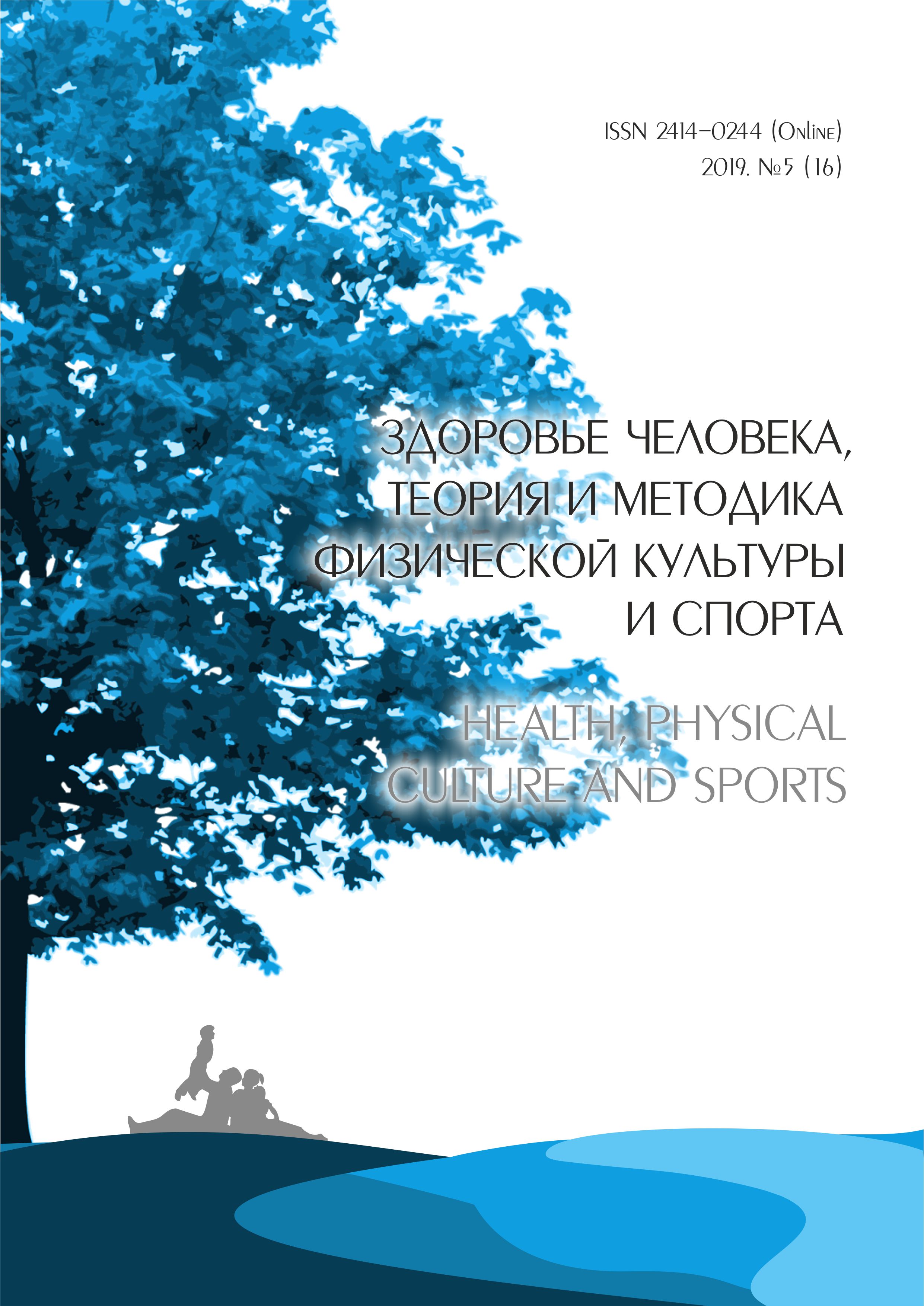TRAINING TO AEROBIC ENDURANCE OF THE TENNIS PLAYERS AGED 12-14 YEARS
Abstract
The features of the development of aerobic endurance of tennis players are considered. It is shown that the focus of the training process of tennis players 12-14 years old requires the primary development of endurance. To identify the effectiveness of the training we developed, we conducted an experimental study. The study involved tennis players of 12-14 years old (n = 20) training (stage of specialization) groups of the 3rd year of training in Kazan. In the course of a stating study, athletes 12-14 years old determined aerobic endurance using the test “6-minute shuttle run at a distance of 30 meters’ — the athlete runs a distance of 30 meters there and back for 6 minutes. During the study, the distance traveled by the athlete in 6 minutes (m) was measured. To assess the recovery processes after dosed work, the Harvard step test was used. The load was given in the form of climbing a step, 40 cm high for 5 minutes with a frequency of 30 lifts in 1 minute. Determine heart rate (HR) before and after exercise. Differences in test results between the experimental and control groups at the beginning of the pedagogical experiment are not significantly significant, which indicates the homogeneity of the groups. At the end of the experiment, significant changes occurred in the experimental group (t = 2.65, at p<0.05), in the control group, the changes were not statistically significant (t = 1.19 at p>0.05). Improvement in aerobic endurance during the experiment in the experimental group of tennis players 12-14 years old was in the test “6 min. running” — 8.5%, in the control — 3.8%; in the “step test” 28% and 24.5%, respectively. Thus, it can be argued that the training facilities we have proposed are effective and can be recommended for inclusion in the methodology of developing the endurance of tennis players at the stage of sports specialization. The use of options for the repeated method for the development of aerobic endurance using specially-trained training aids has been substantiated. A program for the development of aerobic endurance tennis players.
Downloads
References
вье человека, теория и методика физической культуры и спорта. 2016. № 1. С. 97-110. URL: http:// journal.asu.ru/zosh/article/view/1044.
2. Звягина Е. В., Диогенова К. С. Влияние факторов режима дня на здоровье студентов, занимающихся спортом // Здоровье человека, теория и методика физической культуры и спорта. 2018. № 4 (11). С. 37-48. URL: http://journal.asu.ru/zosh/article/view/4748.
3. Матвеев Л. П. Основы спортивной тренировки. М., 2013. 324 с.
4. Скородумова А. П., Баранова И. С., Кузнецова О. В., Тошович С. Д. Физическая подготовленность теннисистов 6-14 лет : методическое письмо. М., 2016. 26 с.
5. Теннис : учебник для вузов физической культуры / под общ. ред. А. П. Скородумовой, Ш. А. Тарпищева. М., 2011.
6. Дугнист П. Я., Романова Е. В. Особенности адаптации организма спортсмена к физическим нагрузкам: аналитический обзор // Здоровье человека, теория и методика физической культуры и спорта. 2016. № 2. С. 3-13. URL: http://journal.asu.ru/zosh/article/view/1621.
7. Зациорский В. М. Физические качества спортсмена. М., 2008. 53 с.
8. Голенко В. А., Скородумова А. П., Тарпищев Ш. А. Академия тенниса. М., 2002. С. 129-170.
9. Bompa T. From Childhood to champion Athlete // Hist. Biol J. Toronto, 2013. Vol. 21, № 2. P. 75145.
REFERENCES
1. Kuz’min E. B., Aziullin R. R., Denisenko Yu. P., Ionov A. A., Geras’kin A. A., Andrushchishin I. F. S portivnaya motivatsiya kak psikhicheskoe sostoyanie lichnosti sportsmena. Health, Physical Culture and Sports. 2016. № 1. S. 97-110 (in Russian). URL: http://journal.asu.ru/zosh/article/view/1044.
2. Zvyagina E. V., Diogenova K. S. Vliyanie faktorov rezhima dnya na zdorov’e studentov, zanimayushchikhsya sportom. Health, Physical Culture and Sports. 2018. № 4 (11). S. 37-48 (in Russian). URL: http://journal.asu.ru/zosh/article/view/4748.
3. Matveev L. P. Osnovy sportivnoi trenirovki. M., 2013. 324 s. (in Russian).
4. Skorodumova A. P., Baranova I. S., Kuznetsova O. V, Toshovich S. D. Fizicheskaya podgotovlennost» tennisistov 6-14 let: metodicheskoe pis’mo. M., 2016. 26 s. (in Russian).
5. Tennis: uchebnik dlya vuzov fizicheskoi kul’tury /pod obshchei red. A. P. Skorodumovoi, Sh. A. Tarpishcheva. M., 2011 (in Russian).
6. Dugnist P. Ya., Romanova E. V. Osobennosti adaptatsii organizma sportsmena k fizicheskim nagruzkam: analiticheskii obzor. Health, Physical Culture and Sports. 2016. № 2. S. 3-13 (in Russian). URL: http://journal.asu.ru/zosh/article/view/1621.
7. Zatsiorskii V. M. Fizicheskie kachestva sportsmena. M., 2008. 53 s. (in Russian).
8. Golenko V. A., Skorodumova A. P., Tarpishchev Sh. A. Akademiya tennisa. M., 2002. S. 129-170 (in Russian).
9. Bompa T. From Childhood to champion Athlete. J. Hist. Bio. Toronto, 2013. Vol. 21, № 2. S. 75-145.
An author should not normally publish manuscripts describing essentially the same research in multiple journals or publication venues. Such redundant publication is generally considered to constitute unethical publishing behavior, and if discovered may result in a manuscript under consideration being rejected, or a published article being retracted.
Authors of manuscripts reporting on original research should present an accurate account of the work performed, accompanied by an objective discussion of its significance. Underlying data should be represented accurately in the manuscript. The manuscript should contain sufficient detail and references to permit others to replicate the work. The fabrication of results and the making of fraudulent or knowingly inaccurate statements constitute unethical behavior and may be cause for rejection or retraction of a manuscript or published article.





